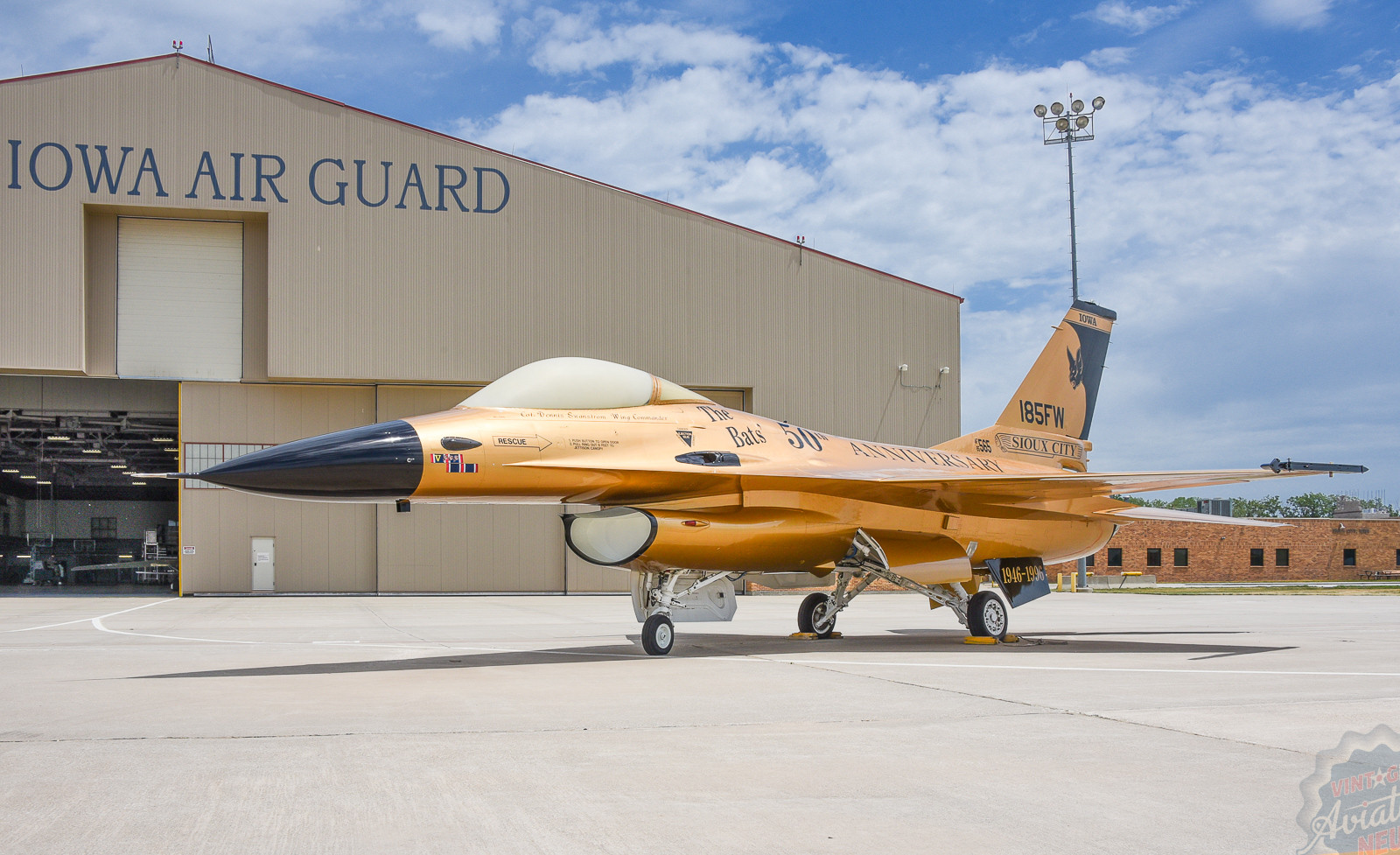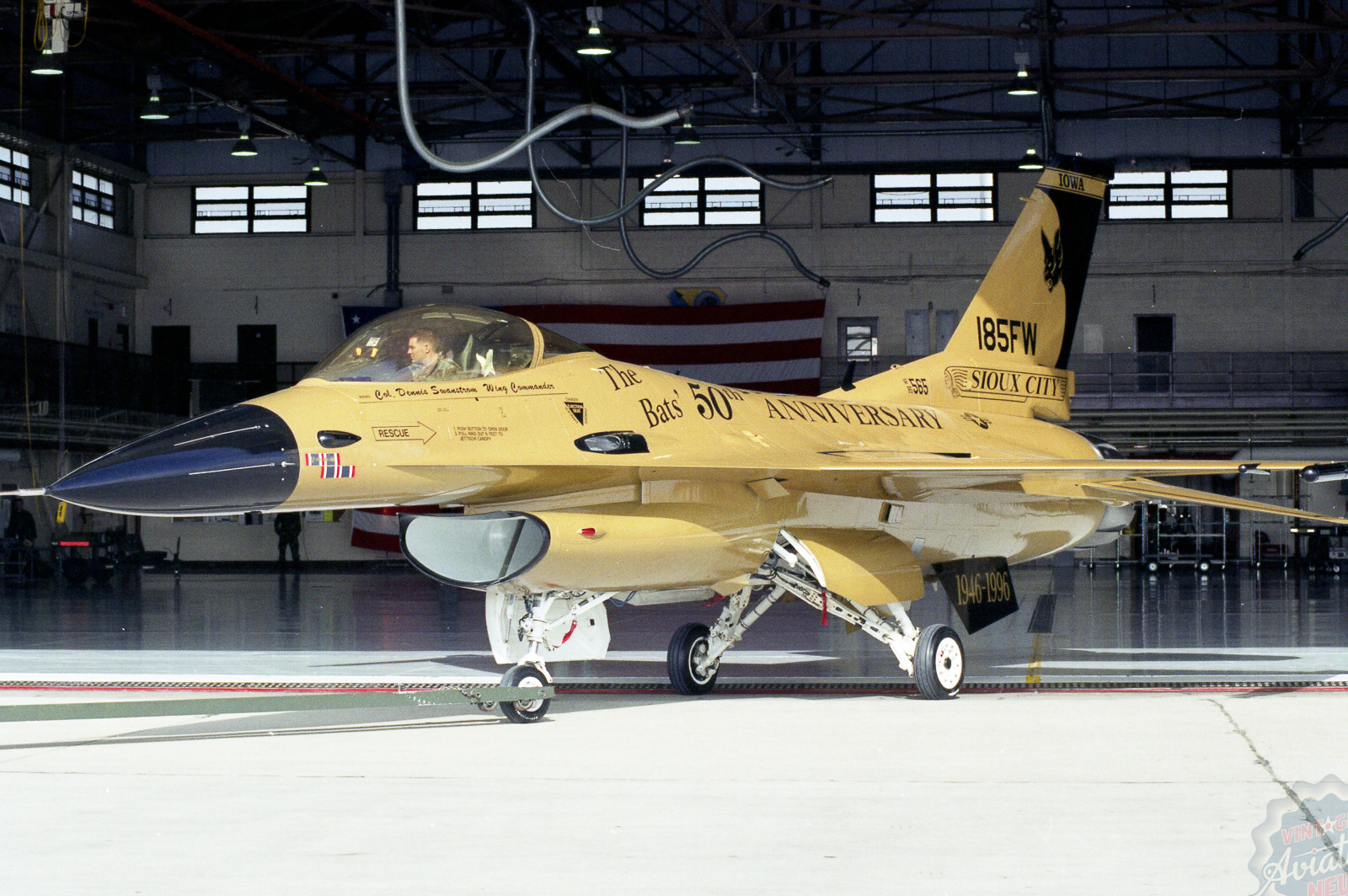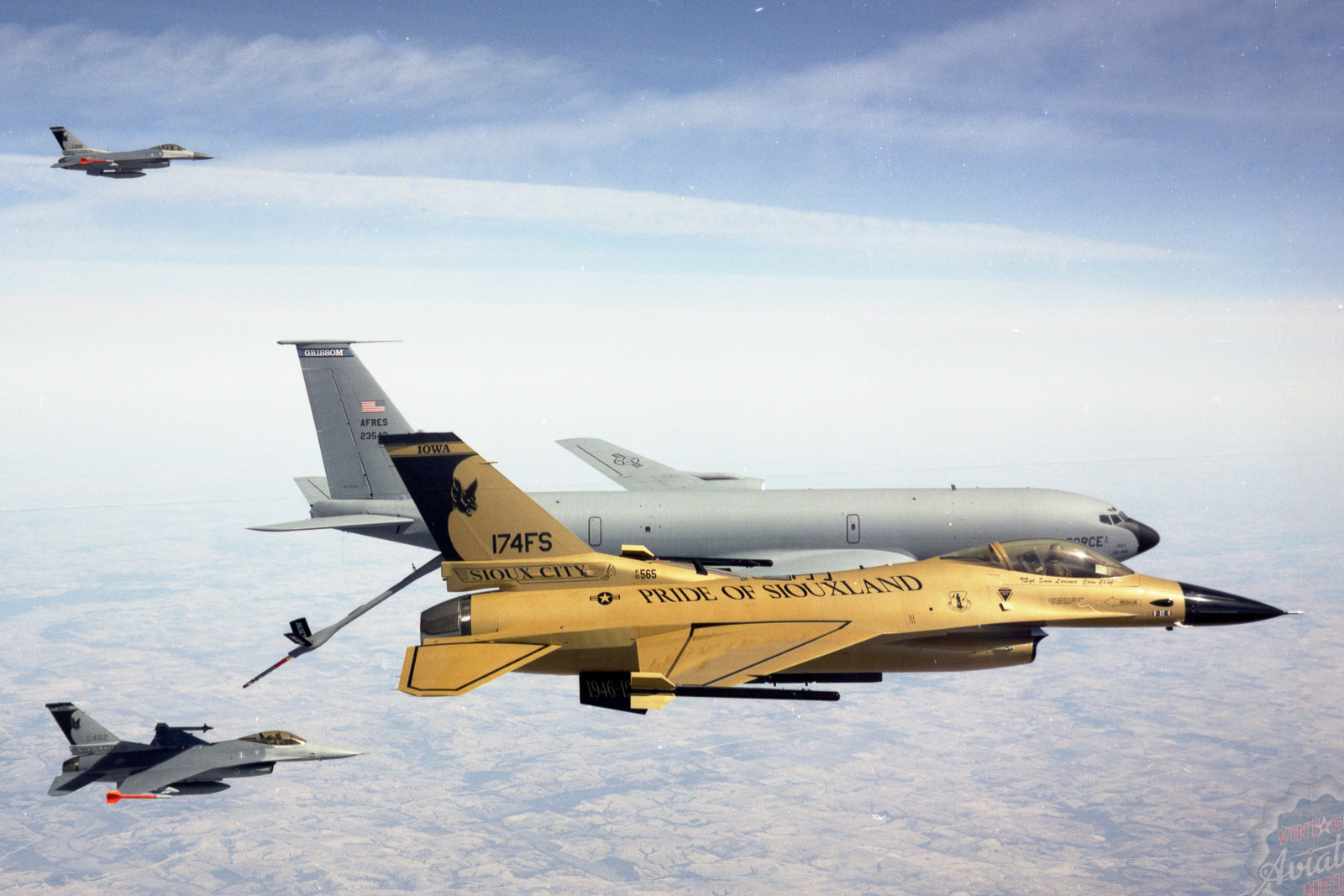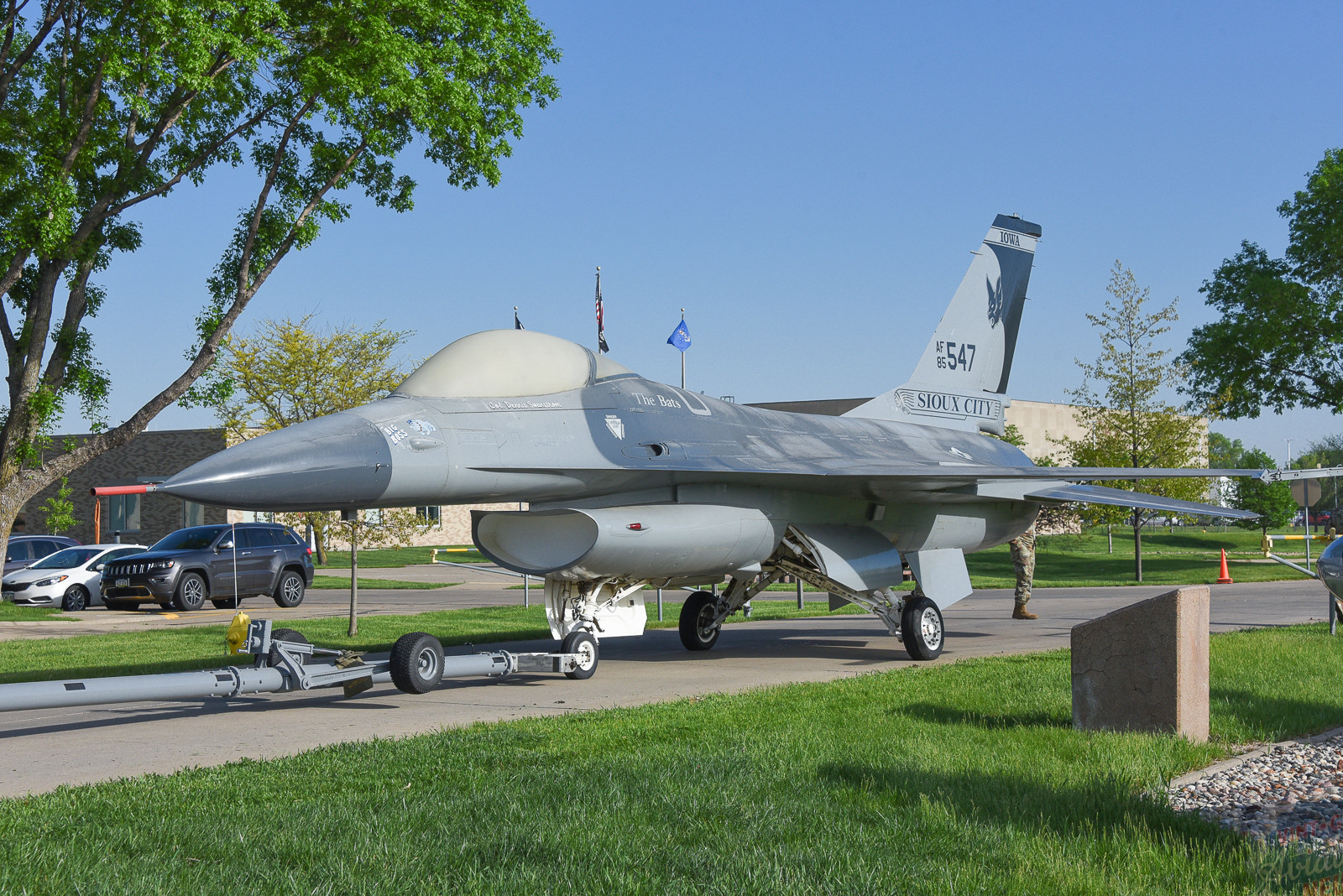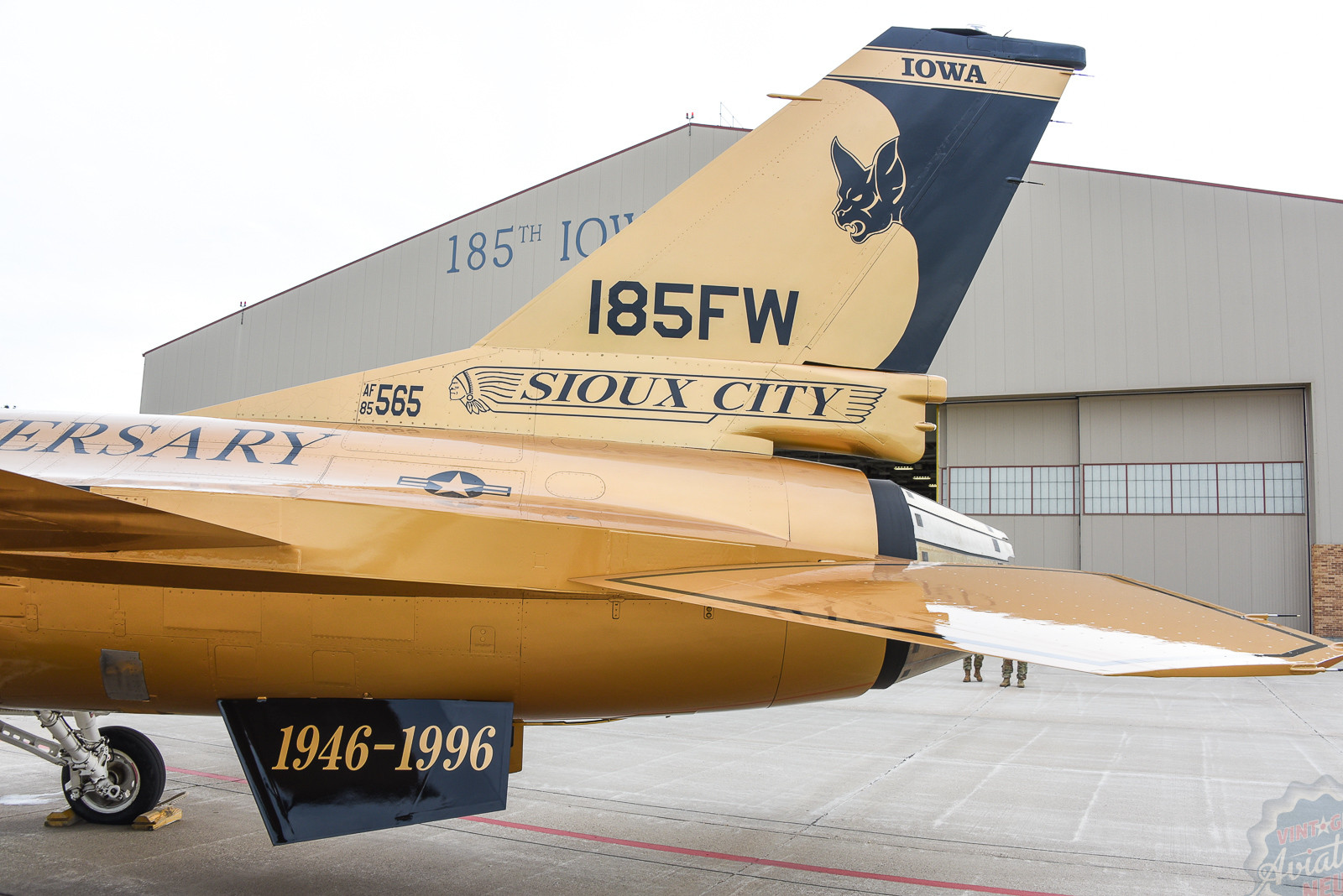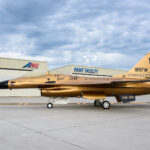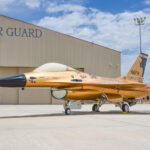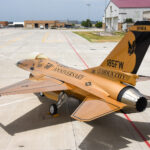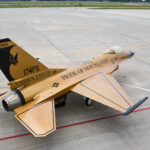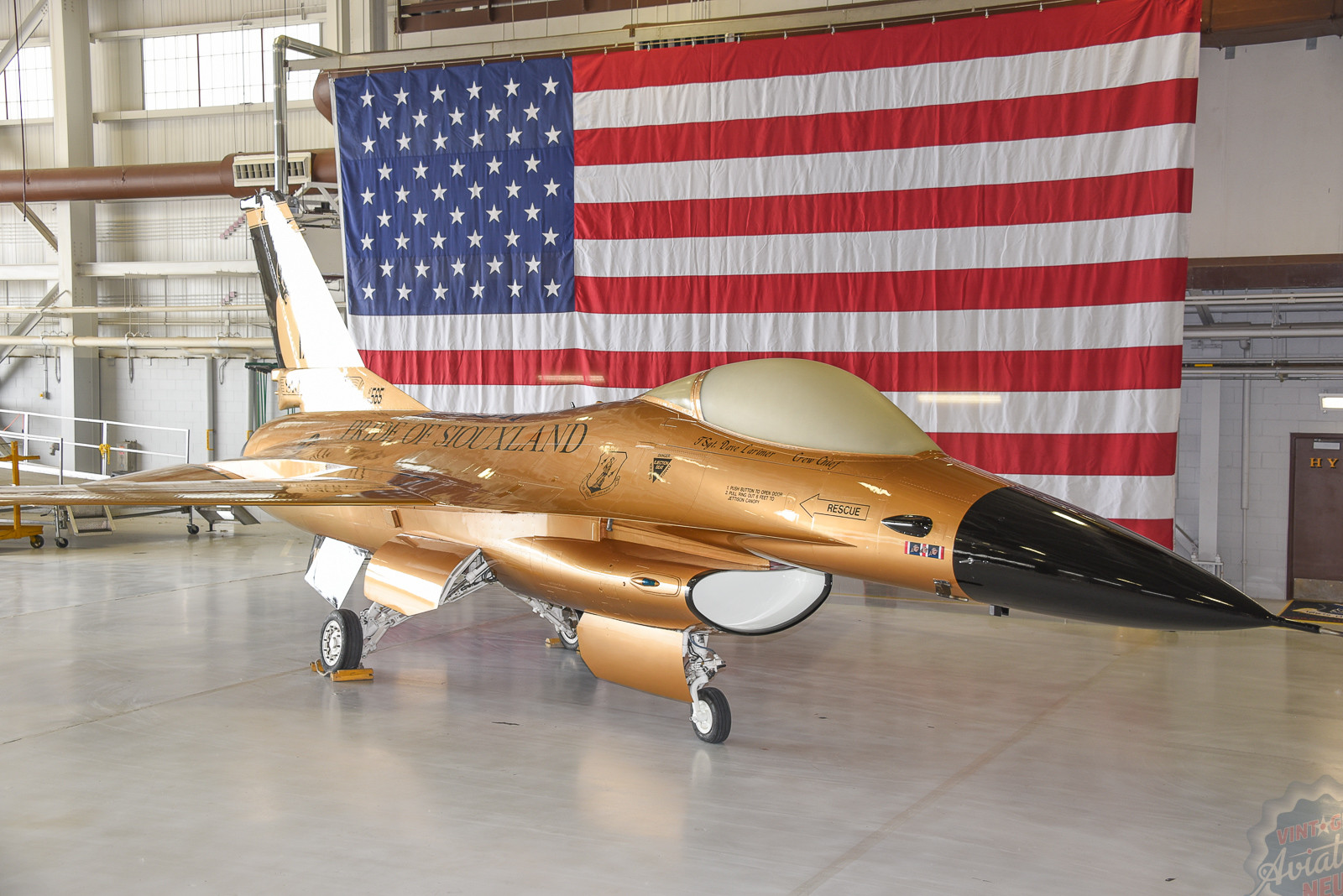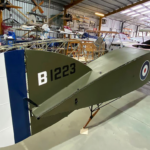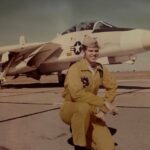We have covered a number of commemorative paint schemes on active military aircraft over the years, but it is fair to say that the livery chosen for this Fighting Falcon with the 185th Air Refueling Wing at Colonel Bud Day Field in Sioux City, Iowa is perhaps the most unexpected… a gold-painted F-16! While the paint shop at Sioux City has applied the new livery to a non-airworthy F-16A which had been on long-term static display in more conventional markings at the base, it does replicate an aircraft which flew with the 185th before its conversion to the inflight refueling role. The following article describes the backstory…
Story by: Senior Master Sgt./GS-11 Vincent De Groot
Public Affairs Superintendent, 185th ARW, Sioux City, Iowa
With the popularity of this summer’s block buster fighter jet film featuring an awesome F-14 Tomcat, 2022 is shaping up to be the year to celebrate the 4th generation fighter jet.
This week the Iowa Air National Guard has unveiled a historic fighter jet of their own; a retro 50th anniversary, down to the details, gold F-16 just as it first appeared in 1996.
In an era of elaborate commemorative aircraft paint schemes, like the Indiana ANG black A-10 or the South Dakota ANG blue F-16, the story of a gold F-16 may not sound unique but in 1996 it was epic.
The story of the 185th Fighter Wing’s gold F-16 was a big giant deal because painting an entire jet, something other than standard tactical grey was rarely done in the 1990’s. At that time units could get permission to paint nose art or an elaborate tail flash. When the gold jet made its debut it was the biggest thing to reverberate across the fighter jet community since the death of Lt. J.G. Nick “Goose” Bradshaw.
The original gold F-16 first made its appearance on the flight line in Sioux City as the unit marked its 50th anniversary in 1996.
This year the unit has done a do-over just as the Air Force is marking its 75th Anniversary in 2022.
By today’s standards a completely gold F-16 may not seem like an anomaly. A quick internet image search of F-16 paint schemes turns up dozens of elaborate designs. Veteran 185th members say that other than the Thunderbirds, painting an entire U.S. Air Force jet was “not done” 25 years ago.
The famous gold jet was the brainchild of former, and much beloved 185th Fighter Wing Commander Col Dennis Swanstrom. When the F-16 static display in Sioux City had become sun baked and was due for some attention, ideas of making the F-16 gold began to swirl.
The old F-16 was on display at the Iowa Air National Guard in Sioux City for nearly 20 years. The 174th Fighter Squadron had flown F-16s during the decade of the 1990’s until converting to the KC-135 in 2001. After the unit’s conversion, the F-16 was added to a small airpark of previously flown 185th aircraft at the Air Guard unit.
Aircraft on display in Sioux City include variations of the F-80, an F-100 on a stick and an A-7 that are all gathered near the unit’s headquarters building.
Just like its predecessor, the new gold jet has the script “Pride of Siouxland” imprinted across the fuselage on one side. The other side of the aircraft has the words “The Bats 50th Anniversary” in large print. The paint also includes text that shows “1946-1996” painted on the ventral fins.
Like the original, the 2022 scheme retains the gothic bat tail flash with “Iowa” painted on the top of the tail. The words “Sioux City” appear inside an elongated Native American headdress on the empennage at the bottom of the tail.
The design also includes a shiny black radome on the front of the aircraft as part of the black on gold design. The words “Col Dennis Swanstrom Wing Commander” are painted beneath the canopy on the driver’s side, and “TSgt Dave Larimer Crew Chief” embossed on the right side.
The 1996 version of the gold F-16 was actually one of the wing’s flying inventory at the time. It was Col. Swanstrom who gets all the blame or credit for wanting to do something striking to celebrate the unit’s milestone anniversary.
As the story goes, Swanstrom was a consummate promoter and didn’t always concern himself with particular rules if they got in the way of a good idea. The unit’s 50th anniversary happens only once and for those who knew him, when Swany had a good idea, no amount of persuasion could convince him otherwise.
Swanstrom had joined the group of F-100 pilots in the Sioux City in the late 1960s just as they were returning from Vietnam. It was during the year-long mobilization when the Iowa Air National Guard unit first used the call sign “BAT” that is depicted on the F-16 tail. The “BAT” call sign was adopted because the unit often flew night missions while at Phu Cat Air Base.
The group’s performance while at Phu Cat solidified a culture of pride and excellence that follow-on generations, led by Swanstrom, would pick up in the years ahead.
The following decade the group had perfected their close air support mission with the A-7 by earning multiple flying and aircraft maintenance awards. At the beginning of the 1990’s the unit finally obtained the Air Force’s premier multi-role fighter, combined with expertise to go with the new mission. The group knew they were part of the best trained and equipped Air Force in the world and Swanstrom was eager to tell their story.
Nearly 30 years after Swanstrom began flying, he found himself in the position where he could exercise some autonomy as the unit’s Wing Commander. It was on the occasion of the unit’s 50th anniversary that Swanstrom wanted to do something big to celebrate.
According to unit members at that time, Swanstrom’s idea of painting the original gold jet was initially denied, citing pesky things like combat readiness. Undeterred, Swanstrom decided that the jet could quickly be restored to tactical grey if needed, so he pressed on with his gold F-16 paint idea.
On the short list of why painting the jet gold was a good idea, Swanstrom rationalized that the jet would be an excellent way to promote the unit. According to his contemporaries it was further justified because it would be great for unit morale.
Twenty five years later, the gold F-16 is again fulfilling its purpose in 2022 of helping tell the unit’s story. The gold jet represents an idea that goes beyond just one commander or one air wing.
Ideas like the importance of airpower that began with Billy Mitchell and championed this year by Pete “Maverick” Mitchell are encapsulated by projects like the gold F-16 in Iowa. The gold jet is a celebration of every Airmen, past and present who have served proudly in the United States Air Force from its beginning through its 75th year.







